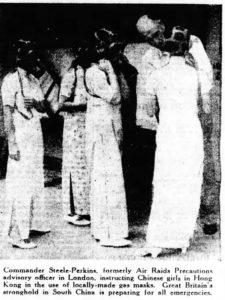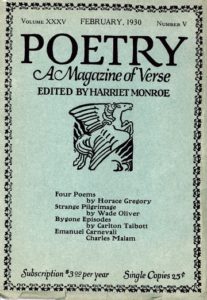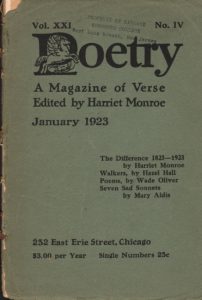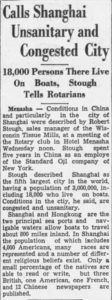Posted: July 31st, 2017 | No Comments »
July 31 1938 – As the Japanese bomb nearby Canton experts are shipped from London to Hong Kong to advise on the distributions, use and effectiveness of gas masks in the colony. Hopefully they checked out the supplier of “locally-made” gas masks – fake masks had already been appearing in Shanghai since 1937 (see blog post on that here)

Posted: July 30th, 2017 | No Comments »
The 1935 basketball champions of China were the boys from Fu Jen University (otherwise known as the Catholic University of Peking)….

Posted: July 29th, 2017 | No Comments »
Essentials…I’m sure you’ll agree…click to enlarge

Posted: July 28th, 2017 | No Comments »
A short poem published in 1934….
Peking Dust
Of camphor wood and carved jade
The shy wings of this song are made.
*
Over the grey walls of Peking
They swoop and dart and soar and sing,
*
Leaving behind the dusty fret
Of hands that toil, and hearts that sweat
*
Their crimson drops of living blood
To carve from lifeless stone and wood
The lean flesh of their livelihood.
*
Wade Oliver
Though published in American newspapers in 1934 the poem’s origins may be earlier as, from what I can glean online, Oliver was at his most prolific in the 1920s and early 1930s. Poetry Quarterly magazine described Oliver as an ‘authentic’ whose work had a ‘high level of lyricism and imagery’.
I’m not sure if Oliver ever wrote another poem about China but he was seemingly favoured as a contributor to Harriet Monroe’s journal Poetry. Monroe’s interest in China combined with her professional relationships with Amy Lowell and Ezra Pound on Chinese poetry have been well documented and noted before on this blog via the work of various academics including Anne Witchard of Westminster University.


Posted: July 27th, 2017 | No Comments »
Apologies in advance for self promotion – A link to an interview with me in the Los Angeles Review of Books talking about Bloody Saturday 1937, China and World War Two, and (perhaps of less interest – what I’m reading, like, don’t like and have never got round to reading/watching)….

Posted: July 26th, 2017 | No Comments »
Seems not everyone who went to Shanghai in the 1930s loved it – this from 1932 and a report to the Rotary Club in Menasha, Wisconsin from Robert Stough of the Wisconsin Tissue Mills. Perhaps not surprising that a tissue salesman should find a city unsanitary – just talking up business really! It doesn’t sound like a very informative meeting – let’s hope they called it a night and hit the pub quickly!!

Posted: July 24th, 2017 | No Comments »
!935 saw the release of Shanghai with Charles Boyer, as a Shanghai financier, and Loretta Young as the love interest. To promote the film the studio released some specially commission artwork to the newspapers…

Posted: July 22nd, 2017 | No Comments »
Last week I blogged about the sad tale of Marshal Smith Hairston who, distraught at the loss of a child, committed suicide in room 302 of Shanghai’s Astor House Hotel in July 1936…courtesy of a China Rhyming regular reader, here is room 302 at the Astor – I can’t be sure they haven’t played around with the room numbers since 1936 but anyway…









